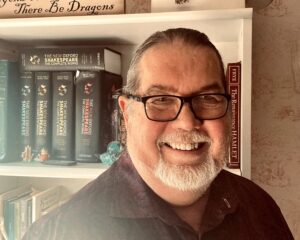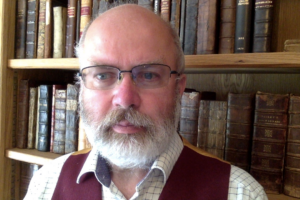Susana Varela Flor

“Was Queen Catherine of Braganza a collector? Collecting, Displaying, Consuming at Bemposta, Lisbon“
Catarina of Braganza (1638-1705), Infanta of the Portuguese Royal House and Queen of England, had her last will drafted in 1699 at the Palace of the Counts of Soure in the heart of Bairro Alto, central Lisbon. Six years later, Queen Catarina passed away at her Palace at Bemposta, where the will and an attached document titled “General Provisions” were opened. Less than a month later, the “Inventory Deed of the Assets left by the Queen’s death” was drawn up, with the Judge being the Magistrate Bartolomeu de Sousa Mexia and the scribe JoĂŁo de Campos de Andrade.
For the execution of this Inventory, the Judge relied on the expertise of four goldsmiths and gemstone appraisers from the Casa da Ăndia: Manuel Nunes, Manuel Leal, Manuel Pereira da Silva and AntĂłnio Martins de Almeida, gold and silver hallmarks. Building upon this extensive documentation, which includes the description of the Bemposta Palace, we will endeavor to respond to the question posed in the title, with some background points. Firstly, the collecting tradition of the House of Braganza; secondly, the separation between the assets of the House of Braganza and those of the Royal Crown (1646); thirdly, the devastating 1755 earthquake for the History of Portugal.
The Queen’s own words are not elucidative in clarifying concepts such as âCollecting, Displaying, Consumingâ, as when referring to her heritage, she only indicates “the manner in which I want everything currently used for the ornamentation of the Palace and for the service of my Chapel to be disposed of.”
Susana Flor obtained her PhD in History (specialising in Art, Heritage and Restoration) from the Faculdade de Letras da Universidade de Lisboa for a thesis entitled “Aurum Reginae or Queen-Gold: The iconography of Catherine of Braganza” in 2010. Between 2012-2015 she was the coordinator of the “DigiTile Library: Tiles and Ceramic online” project (PTDC/EAT-EAT/117315/2010), funded by Portuguese national funds through FCT/MCTES (PIDDAC).
From 2012, she is full member of the Instituto de HistĂłria da Arte da Faculdade de CiĂȘncias Sociais e Humanas da Universidade Nova de Lisboa and a collaborator of the Instituto HERCULES from Universidade Ăvora. It is in these two institutions that she has conducted her post-doctoral project, entitled “O Retrato Barroco em Portugal (1612-1706): histĂłria, arte e laboratĂłrio” (SFRH/BPD/101741/2014), to which it was conceded a grant. She was full researcher at Universidade NOVA de Lisboa funded by national funds through the FCT Âż Fundação para a CiĂȘncia e a Tecnologia, I.P., under the Norma TransitĂłria: [https://doi.org/10.54499/DL57/2016/CP1453/CT0032] from 2019-2023.
Currently, she is Assistant Researcher at Universidade NOVA de Lisboa in the Instituto de HistĂłria da Arte of Faculdade de CiĂȘncias Sociais e Humanas / The Associate Laboratory for Research and Innovation in Heritage, Arts, Sustainability and Territory (IN2PAST) – https://in2past.org.
She is also Professor of Art History in the Art History Department of NOVA/FCSH [https://doi.org/10.
Website:
Gary Taylor

“From Planetary Tragedy to the Cabinet Stage“
The modern word theatre originates in ancient Athens (ÎžáœłáŸ±ÏÏÎżÎœ), where it means “seeing-place” or “watching-place”. But the long history of this word, in multiple languages over 25 centuries, illustrates the problems of “things in translation”, including applying an old word to a modified thing. The polygonal wooden building called The Theatre, constructed in London in 1576, differs significantly from the ancient Roman and Greek buildings with the same name. Most importantly, The Theatre of 1576, disassembled and then reassembled with the new name “The Globe” in 1599, was essentially a cylinder partially open at one end: sightlines from different standing and seating places inside that building offered good views of the stage, the actors, and other spectators, but little or no view of the outside world. Early modern “private” indoor theatres offered no view whatsoever of the outside world. John Orrell celebrates these seeing-places as “The Human Stage.” By contrast, the sightlines of every spectator in any part of the Athenian Theatre of Dionysos in the fifth century B.C.E. would have included, in addition to actors and chorus, a vast constant background of changing sky, mountains, trees, and cityscape, and many sightlines would have included the sea. I consider the contrasts between Athenian attention to “planetary tragedy” (exemplified by Prometheus Bound) and the early modern and modern focus on private tragedies (exemplified by Middleton and Rowley’s The Changeling).
Gary Taylor is Lawton Distinguished University Professor at Florida State University. With Stanley Wells he co-edited the Oxford Shakespeare (1986-7) and led an international team of 75 scholars for the Oxford Middleton (2007). He also led the team for the New Oxford Shakespeare Complete Works (2016-17) and the New Oxford Shakespeare Complete Alternative Versions (in progress). He spent more than two decades identifying fragments of the lost Shakespeare-Fletcher History of Cardenio, an adaptation of Don Quijote. He has also written on the history (Reinventing Shakespeare) and theory (Cultural Selection) of artistic reputations, on body modification (Castration), and the linguistic evolution of racialized English (Buying Whiteness).
Website: https://english.fsu.edu/faculty/gary-taylor
John Considine

“The Dictionary or whole Treasure of Words”
In 1685, the preacher Henry Killigrew reflected that when Christ healed a man who had been deaf from birth, he not only gave him hearing, but language. A man who had never heard a word now, suddenly, had words at his command. And for the words to have meaning, he needed a new understanding of things. Christ gave him, according to Killigrew, âWords, as well as the Power to pronounce them; and Conceptions, as well as Words; … infusing into his Soul the Dictionary or whole Treasure of Words in a Moment, together with a Competency of Principles and Notionsâ. In that view, when early modern lexicographers collected words, they collected notions, as well â and not least among the notions, information about things. One of the purposes of an early modern dictionary was to be a sort of paper museum.
In my lecture, I would like to consider the implications of this point for early modern English lexicography, concentrating on the seventeenth century. Six of the topics on which I would like to touch are as follows. First, the rich encyclopedic vocabulary, much of it of Plinian origin, in sixteenth-century LatinâEnglish dictionaries, and the challenges which it presented for the first English lexicographers in the hard-word tradition, such as Edmund Coote and Robert Cawdrey, the latter in his seminal Table alphabeticall of 1604. Second, the impact on English lexicography from 1631 onwards of the overtly encyclopedic work of Johannes Amos Comenius. Third, the developing engagement of Edward Phillips, and later editors of his New world of English words from 1658 onwards, with technical and encyclopedic information. Fourth, the lexicographical, encyclopedic, and museum-building work done by Phillipsâs contemporaries in the Royal Society of London, especially as reflected in John Wilkinsâs Essay towards a real character and a philosophical language, and William Lloydâs âAlphabetical dictionaryâ, issued together in 1668. Fifth, the step towards the making of an illustrated English dictionary, taken in Randle Holmeâs extraordinary Academie of armorie of 1688. And last, the marked division between the lexical and the encyclopedic in the work of Edward Llwyd at the end of the century, and Llwydâs new attention to sounds.
By the end of the seventeenth century, I think that a three-way split was becoming evident, between the genres of the catalogue, which described a collection; the encyclopedia, which described the visible world; and the dictionary, which described an audible world, the world of language, the world to which the deaf man was admitted when Christ infused âthe Dictionary or whole Treasure of Wordsâ into his soul.
John Considine taught English at the University of Alberta in Canada until 2021; before that, he was an assistant editor of the Oxford English Dictionary. He is the author of Dictionaries in Early Modern Europe (Cambridge, 2008), Academy Dictionaries 1600â1800 (Cambridge, 2014), and Small Dictionaries and Curiosity (Oxford, 2017), and the editor of The Cambridge World History of Lexicography (Cambridge, 2019). His most recent book is Sixteenth-Century English Dictionaries (Oxford, 2022), which is the first volume in a trilogy, Dictionaries in the English-Speaking World 1500â1800. He is working on the second volume, which will cover the seventeenth century, and on an edition of a dictionary first published in 1604, Robert Cawdreyâs Table Alphabeticall.
